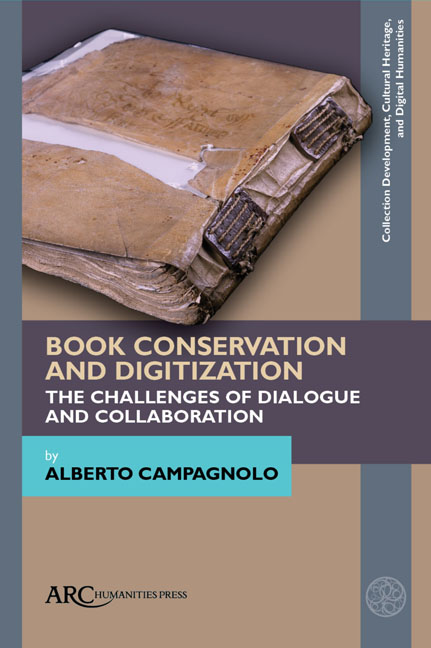Chapter 13 - Implementing Advanced Digital Imaging Research in Cultural Heritage: Building Relationships between Conservators and Computational Imaging Scientists
Published online by Cambridge University Press: 20 November 2020
Summary
DIGITIZATION PROGRAMS ARE now commonplace throughout the cultural and heritage sector. However, moving away from routine digitization, there are opportunities in using advanced imaging capture methods in the computational sciences to analyze primary historical sources. This relationship can be dependent on conservators and conservation science to provide insight and access, and prioritize issues through highlighting how and why particular documents or artifacts may benefit from an advanced imaging approach— for example, with the virtual flattening of the damaged Great Parchment Book. In addition, imaging scientists can develop best practices for the application of computational technologies within the cultural and heritage space— for instance, to allow more efficient use of multispectral imaging to reduce the time and cost of capture for particular conservation applications, such as the identification of pigments. This chapter reflects on my twenty years researching and teaching digitization technologies in cultural heritage and developing advanced interdisciplinary projects that require teams with wide-ranging expertise, indicating both the benefits and issues that may arise when attempting to undertake advanced imaging of cultural heritage objects, and stressing the role of the digital humanist, or the heritage scientist, in bridging disciplinary divides. It is hoped that by doing so the type of research success that can emerge when links are forged between the conservation and advanced digitization communities can be demonstrated, and, in addition, others can be encouraged to build links that use advanced digital imaging as a research approach.
Digital Imaging and Cultural Heritage: A Personal Journey
I first saw digitization technologies in action in 1993. A friend's uncle demonstrated an early portable scanner while digitizing family photo albums. With a mind duly blown, I hunted out facilities at the University of Glasgow, where I had recently started my undergraduate degree in History of Art and English Literature. My flatmate, studying Physics, introduced me to the World Wide Web just as it was accelerating, and I rapidly became an avid user of Usenet alt.rec groups and GeoCities, on slow, bulky public University Library computers that heralded a networked, utopian future. Manually updated, lovingly curated websites such as Alan Liu's Voice of the Shuttle and Ross Scaife's Diotima indicated how digital cultural heritage would fit into this new digital world order.
- Type
- Chapter
- Information
- Book Conservation and DigitizationThe Challenges of Dialogue and Collaboration, pp. 217 - 232Publisher: Amsterdam University PressPrint publication year: 2020



